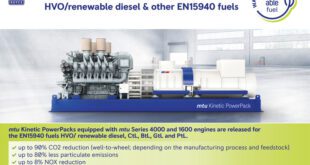The US military knows that its branches must revamp their thinking about how to engage in “the theater of war” in the new, post-Cold War world of the 21st century. One thing that the military leaders stress is the desire for the forces deployed in the theater to be able to be more energy-independent. Currently the US military has policies and procedures in place to interact with allies or sympathetic local populaces to help its forces in the field get their needed energy and clean water when engaged in a foreign military campaign. However, this is not wholly reliable, as the US might well find itself facing unilateral military activities, or have itself in a situation where its allies cannot help it with the resources it needs to conduct its military actions successfully.
The US military is very interested in certain alternative energies that, with the right research and development technologically, can make it energy independent, or at least a great deal more so, on the battlefield. One of the things that greatly interests the military along these lines is the development of small nuclear reactors, which could be portable, for producing theater-local electricity. The military is impressed with how clean-burning nuclear reactors are and how energy efficient they are. Making them portable for the typical warfare of today’s highly mobile, small-scaled military operations is something they are researching. The most prominent thing that the US military thinks these small nuclear reactors would be useful for involves the removal of hydrogen (for fuel cell) from seawater. It also thinks that converting seawater to hydrogen fuel in this way would have less negative impact on the environment than its current practices of remaining supplied out in the field.
Seawater is, in fact, the military’s highest interest when it comes to the matter of alternative energy supply. Seawater can be endlessly “mined” for hydrogen, which in turn powers advanced fuel cells. Using OTEC, seawater can also be endlessly converted into desalinated, potable water. Potable water and hydrogen for power are two of the things that a near-future deployed military force will need most of all.
In the cores of nuclear reactors—which as stated above are devices highly interesting, in portable form, to the US military—we encounter temperatures greater than 1000 degrees Celsius. When this level of temperature is mixed with a thermo-chemical water-splitting procedure, we have on our hands the most efficient means of breaking down water into its component parts, which are molecular hydrogen and oxygen. The minerals and salts that are contained in seawater would have to be extracted via a desalination process in order to make the way clear for the water-splitting process. These could then be utilized, such as in vitamins or in salt shakers, or simply sent back to the ocean (recycling). Using the power of nuclear reactors to extract this hydrogen from the sea, in order to then input that into fuel cells to power advanced airplanes, tanks, ground vehicles, and the like, is clearly high on the R & D priority list of the military.
 Alternative Energy HQ solar power for homes, wind energy, and bio fuel issues
Alternative Energy HQ solar power for homes, wind energy, and bio fuel issues






